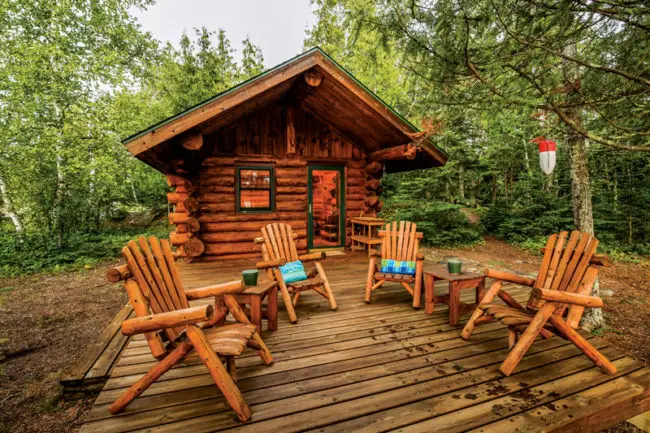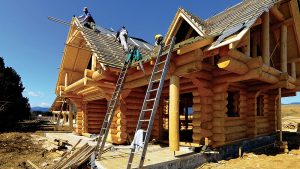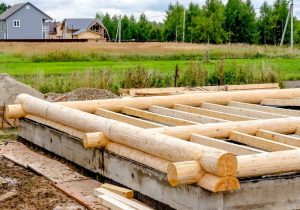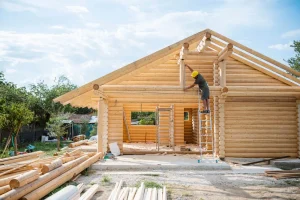Building a log cabin is more than just erecting a structure; it’s a personal escape that connects you with nature, comfort, and simplicity. Whether you dream of a peaceful mountain retreat or a simple lakeside cabin, the entire process requires careful planning and selection. Many first-time buyers don’t realize how challenging the building process can be, from setting a budget and choosing the right lumber to understanding local building codes and maintenance requirements. This guide covers everything you need to know before building a log cabin, so the process is smooth, fast, and enjoyable.
Understand Your Goals and Budget
Before you start building a log cabin, you need to know how you want it to look. Consider whether it will be a vacation home, a permanent residence, or a rental apartment. The style, size, materials, and overall price depend on its intended use.
A small, off-grid home suitable for weekend getaways has very different needs than a larger home for year-round living. Once you’ve clarified your goals, you can create a reasonable budget that covers the costs of materials, construction, permits, utilities, and maintenance.
It’s easy to underestimate costs, especially when they arise suddenly. Generally, you should add at least 15-20% to your total budget to account for potential issues. By setting a budget from the outset, you can save time and money and prevent your dream home from becoming a financial burden.
Choosing the Right Location
One of the most important aspects of your log home project is the location. Look for a piece of land that is both attractive and meets your basic needs, such as security, easy access, and water access.
Before buying a house, investigate the land and soil conditions. Steep or rocky ground can increase foundation costs. Installing utilities like electricity, water, and internet can be expensive in remote areas, so check if these are nearby.
Also, pay attention to the weather and surrounding area. For example, if you plan to build in a cold region, the roof pitch should be steep enough to prevent snow buildup. Likewise, good drainage and elevated support structures can help prevent moisture damage in damp or rainy areas.
Last but not least, research local zoning and building codes prior to buying land. Certain areas may impose restrictions on the size or style of cabins, and the process of obtaining permits can be time-consuming.
How to Choose the Right Wood
The type of wood you choose can affect the lifespan, insulation, and appearance of your cabin. Many wood types have their own advantages and disadvantages. For example:
- Cedar is naturally resistant to rot and insects, has a pleasant aroma, and a smooth finish.
- Pine is a popular choice for beginner home builders because it is inexpensive and easy to work with.
- Douglas fir is strong and stable, making it ideal for beams.
- Spruce is inexpensive and lightweight and is often used in log cabin construction.
- To save on shipping costs, choose locally sourced wood and ensure it’s properly seasoned or kiln-dried to prevent cracking or warping over time.
You should also choose between polished and hand-hewn logs. Hand-hewn logs have a more traditional, rustic look, while polished logs have a more regular shape and are easier to assemble.
Consider the Design and Floor Plan
When designing your log cabin, you can balance creativity and functionality. Think about how you’ll use the rooms and how you’ll live. People love open floor plans because they make cabins warm and cozy and let in natural light.
Consider how many bedrooms, bathrooms, and storage space you need. Even in a small house, good planning can make a big difference. For example, adding a loft for sleeping or storage can make a big difference.
It’s also wise to consider energy savings from the start. For example, install large windows to let in natural light, good insulation to maintain a stable temperature, and a ventilation system to prevent moisture buildup. If you care about the environment, use eco-friendly products, solar panels, or a rainwater harvesting system.
Permits, Codes, and Regulations
A common mistake new builders make is failing to comply with local building codes and obtain permits. Before starting construction, check with your local government to determine which permits are required.
You may need multiple permits for septic systems, plumbing, and electrical work.
Building your own log cabin can be fun, but it’s not easy. Building it yourself saves money and gives you complete control, but it requires time, skill, and physical labor. If you’ve never built anything before, you might find tasks like the foundation, roof, or electrical system challenging.
Hiring professionals can guarantee excellent results and speed up the construction process. You can also take a hybrid approach, tackling simple tasks like interior renovations or landscaping yourself and letting professionals handle the more important parts.
If you want to build your own home, consider purchasing a log cabin kit. These kits are easy to use because they come with detailed plans, pre-cut logs, and step-by-step instructions.
Planning: Comfort and Utilities
Modern log cabins combine rustic charm with modern comfort. Even if your home is off-grid, you still need to consider utilities. If you need water, dig a well, use a nearby water source with a filter, or collect rainwater. Off-grid solar panels or wind turbines are also good ways to generate energy. Propane can be used to power your stove and fire.
Good insulation and air circulation are crucial for keeping your home warm and comfortable year-round. To save on energy costs, consider double-pane windows, a waterproof roof, and a roof that allows for natural air circulation.
And finally, don’t forget to connect to the internet. Many remote areas now have satellite or Wi-Fi access, allowing you to stay connected while enjoying the tranquility of nature.
Long-Term Care and Maintenance
A log cabin is a long-term investment and requires regular maintenance. Wood naturally grows, shrinks, and weathers over time, so regular maintenance is essential to maintain its strength and beauty.
Apply a protective paint or sealant every few years to protect it from insects, water, and UV rays. Regularly inspect the foundation, roof, and gutters for damage. Also, ensure adequate air circulation in the crawl space and attic to prevent mold growth.
If you take good care of your log cabin, it will last for generations and provide warm family vacations full of wonderful memories.
Frequently Asked Questions
1. How much does it cost to build a log cabin?
The cost depends on the size of the home, the materials used, and the construction schedule. A log cabin you build yourself costs around $25,000, while a professionally built home can cost $100,000 to $300,000 or more.
2. Do I need a permit to build a log cabin?
Yes, permits are required in most areas, even for small buildings. Check local regulations to avoid breaking laws and ensure your log cabin meets safety standards.
3. How long does it take to build a log cabin?
Building your own home can take six months to a year. Depending on the schedule and weather conditions, a professional builder can take three to six months to build a medium-sized home.
4. What type of foundation is best for a log cabin?
Most foundations consist of a concrete slab or piers. This depends on the weather, the size of the home, and the ground conditions. Consult a structural engineer for the best advice.
5. How can I make my log cabin more environmentally friendly?
Use forest-friendly wood, energy-efficient windows, and green energy sources such as solar panels. Insulation and siding with low volatile organic compounds (VOCs) also contribute to environmental protection.
Summary
Starting a log cabin project is an exciting journey, where craftsmanship, nature, and art converge. But careful planning is the key to success. From selecting the right soil and materials to understanding permits and maintenance, every choice affects the final result.
Whether you do it yourself or hire a professional, be sure to plan ahead, do your research, and prioritize quality. If you take the right steps, your log cabin will not only last a lifetime but also offer warmth, tranquility, and natural beauty for many years to come. It will be the perfect escape from the hustle and bustle of life.




